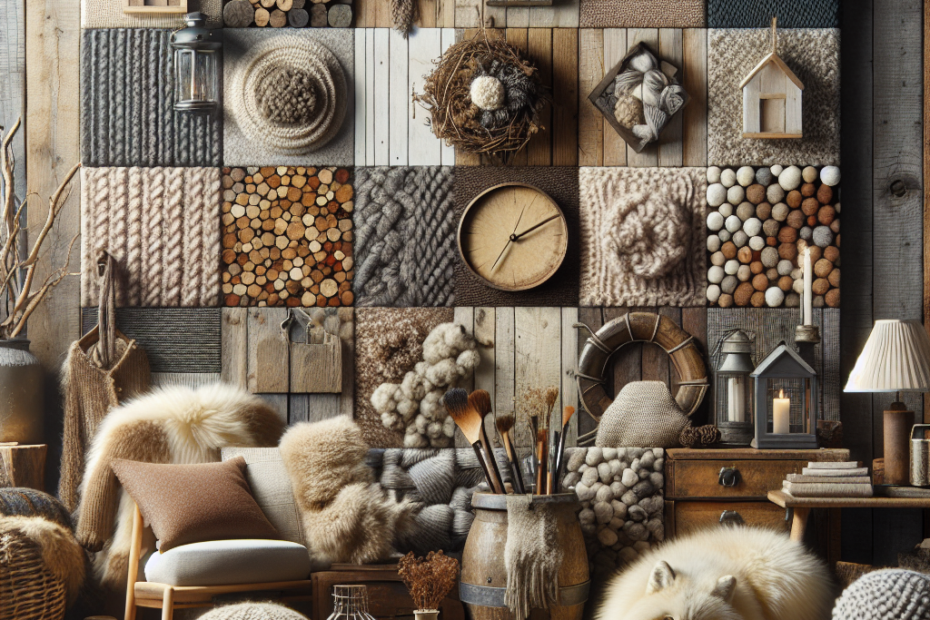“`html
The Power of Textures in Rustic Home Design
Their eyes settle on the warm, inviting charms of rustic home design, where the power of textures transforms spaces into cozy, visually appealing retreats. Leveraging rustic textures is an integral part of this style, enriching interiors with character and sensory depth. With increasing awareness of sustainable living, more people gravitate towards natural aesthetics, and rustic textures perfectly embody this trend. In fact, a survey conducted by Houzz in 2022 revealed that 45% of homeowners are inclined towards natural and organic themes in their renovations.
The Beauty of Rustic Textures
Rustic textures are primarily characterized by their natural, rugged, and unrefined surfaces. These textures might include wood grains, stone surfaces, textiles like burlap and linen, and wrought iron details. Each material offers a tactile experience that speaks to the senses, creating an ambiance that’s both lived-in and sophisticated.
Wood: Unfinished or distressed wood remains at the forefront of rustic design. Whether it’s barn wood siding or an ancient oak floor, wood’s natural grain brings warmth and history into a room. Upcycling older pieces and integrating them into modern design can be both environmentally friendly and economically savvy.
Stone: Stone, with its timeless appeal, forms an essential component of rustic design. It can enhance spaces through fireplaces, accent walls, or flooring. Its natural imperfections offer unique beauty and durability, making it a smart investment in home design.
Textiles: Soft, natural textiles such as jute, wool, and cotton complement the harder elements of rustic design, adding warmth and coziness. These materials provide a contrast to the rough edges of wood and stone and are often used in window treatments, upholstery, and accent pillows.
Leveraging Texture for Comfort and Style
To create a compelling rustic environment, homeowners can focus on combining different textures to achieve a balanced and harmonious look. They might choose to:
- Mix Textures: Pair smooth surfaces with rough textures like a granite counter with a wooden backsplash. This combination adds depth and interest.
- Focus on Contrast: Use contrasting textures to highlight specific design features, such as a wool rug against a polished concrete floor.
- Create Layers: Layer various textures through rugs, throws, and cushions. It adds dimension and comfort to the room.
Incorporating Textures into Different Areas
They can thoughtfully incorporate rustic textures throughout the home for a cohesive look:
| Area | Texture Suggestions |
|---|---|
| Living Room | Stone fireplace, wooden beams, jute rug |
| Kitchen | Granite countertops, reclaimed wood cabinets, ceramic tiles |
| Bedroom | Linen bedding, wool throws, weathered wood headboard |
| Bathroom | Natural stone tiles, bamboo accessories, cotton towels |
Sustainable Design and Rustic Textures
Rustic textures often originate from sustainable materials, aligning with eco-friendly design practices. They encourage the use of locally sourced and reclaimed materials, reducing the environmental impact. According to the American Society of Interior Designers, sustainable design is no longer a niche market but a mainstream component that continues to grow in popularity, with 68% of designers incorporating sustainable practices in their work as of 2023.
Key Takeaways
- Rustic textures enhance the aesthetic and sensory experience in home design.
- Key materials include wood, stone, and textiles like burlap and linen.
- Mixing, contrasting, and layering textures creates a balanced look.
- Incorporating rustic textures aligns with sustainable living practices.
FAQ Section
1. Why are rustic textures popular in modern home design?
Rustic textures are popular because they add warmth, character, and a natural aesthetic that resonates with the trend towards sustainable and organic living.
2. How can they use rustic textures in a small space?
Incorporating a few key elements like a wooden accent wall or stone tiling in smaller spaces can significantly enhance texture without overwhelming the area.
3. What are the best textiles to use for a rustic feel?
Natural textiles such as burlap, wool, linen, and jute are ideal for adding rustic charm and a cozy feeling to interiors.
4. Can modern and rustic styles be combined effectively?
Yes, the natural beauty of rustic textures works well with modern elements, offering a balanced and inviting look when paired thoughtfully.
5. Is it expensive to incorporate rustic materials into home design?
It can be inexpensive, especially when using reclaimed materials or DIY projects. The cost varies based on the material choice and extent of use.
Through understanding and utilizing rustic textures, homeowners can create spaces that are not only aesthetically pleasing but also reflective of a deeper appreciation for natural materials and sustainable practices.
“`
